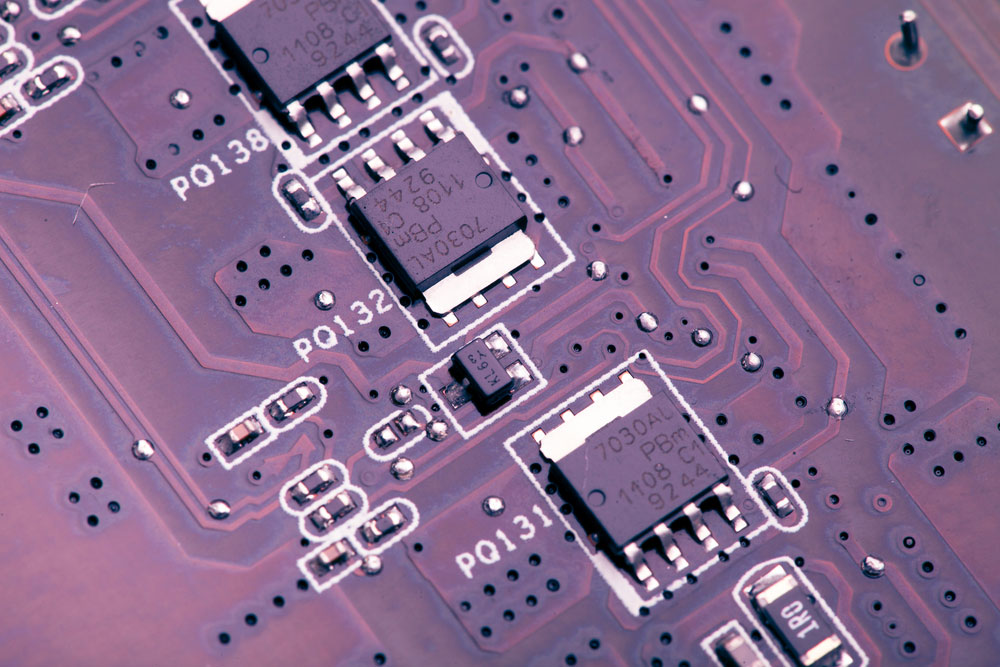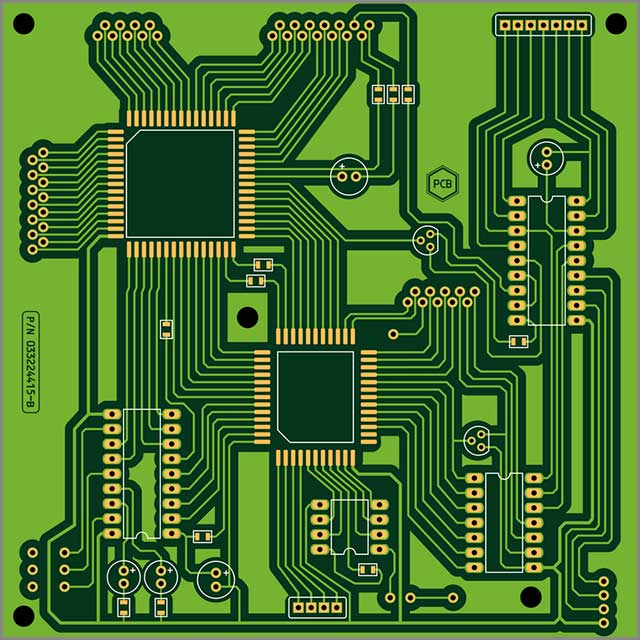
Support Team
Feedback:
support@nextpcb.com
PCB Color is important in any electronic or machine design. Printed Circuit boards exist in different colors in the electronics market. While green-colored Printed Circuit Boards are popular, other colors include red, blue, purple, and white. So, choosing different PCB colors largely depends on the manufacturer or consumer choices, design process, aesthetics, and other factors.
An essential component used in PCB finishing is the Solder Mask. Otherwise known as solder resistor, applying Sol
der Masks on Printed Circuit boards provides a smooth finish on the circuit boards. It is often applied on both sides of the PCBs to make a protective layer.
Also, the application of the solder mask avoids PCB short circuits, which prevents the Solder from spreading through the components and connectors. PCBs are coated with various colors of Solder Masks peculiar to the needs of the Printed Circuit Boards.
This guide takes you on a journey into the different colors of Printed Circuit Boards. It discusses their respective pros, cons, and applications in the electronics market. The PCB colors widely used in the PCB industry include
Black PCB, Purple PCB, White PCB, Green PCB, Yellow PCB, Red PCB, and Pink PCB.
When selecting a particular circuit board, one must consider certain parameters and guidelines. One of these guidelines is the PCB solder mask which contributes to PCB color. Many circuit boards use green as a preferred choice. However, there are other ranges of colors available for PCB solder masks.
This guide examines subtle differences between Printed Circuit Boards' Solder Masks. It also provides essential guides to consumers who may want to go for a specific PCB color by discussing its pros and cons.

The use of black on Printed Circuit Boards is of high importance. In specific circuits, there is no need for light reflection in the operation of the electronic device. More so, black PCBs are functional in devices that require heat absorption. As a result, these devices' Printed Circuit Boards are lacquered with black solder masks.
Black Solder Masks are usually applied during the molten stage of PCB to facilitate its heat absorption process. Companies such as Apple Inc. use black PCBs in their smart devices, and it has become one of the popular Colored PCBs, especially in smartphones and the PC industry.
Black PCBs are in various medical equipment, such as blood pressure monitors, heart rate monitors, and defibrillators.

Another PCB color is Purple. Purple PCB is one whose solder mask is purple. As such, there is performance improvement when choosing a purple Printed Circuit Board from other standard colors. Also, Purple PCBs are often rare.
The different kinds of purple PCBs include Multilayer, Double-sided, Flexible, Rigid-flex, Single-sided, and Rigid PCBs. Materials used to make purple printed circuit boards include FR-3, FR-2, and FR-1 paper boards, High-Density Interconnects (HDI) Board, Polyester Resin, Epoxy Resin, and polyimide Resin.

The hardest design of PCB color is white PCBs. White PCBs are made using white solder Masks. At first glance, they look clean in any environment and industry. However, when there is no implementation of copper traces on the white PCB board, it showcases no contrast, making it a tough PCB design.
White PCB is found in LED systems because it emits light brighter than traditional colors. They are also applicable to electronic devices, especially laptops and computer motherboards.

In terms of PCB color popularity, the blue circuit board has shown its prevalence in many board designs. Blue PCBs offer significant printing contrasts, enabling easy identification of components, numbers, letters, and symbols.
Blue Printed Circuit Boards help detect manufacturing defects; as such, they are used by circuit designers in designing many complex circuits, such as gaming and Robotic circuits. Arduino and Raspberry Pie projects.
The applications of Blue Printed Circuit Boards include Appliances, mobile devices, Televisions, computers, Digital signage, robotics, and automated vehicles. The composition of Blue Printed Circuit Boards includes a blue substrate (FR4), Solder mask, silkscreen, and copper.
Types of Blue PCBs available in the market are:

If you are in the market for a standard PCB color, Green will do your design justice. Green is the most popular and favorite color for Printed Circuit Boards. When you think about Printed Circuit Boards, it usually carries a green color. Green is neither bright nor flashy like Red. Green PCBs are popular in many countries and cut across many engineering and technology industries.
Since the green color has been around since the dawn of technology, major manufacturing plants' materials and resources to produce them are easily and widely accessible.

Yellow Printed Circuit Boards are circuit boards whose solder mask is the color yellow. Despite the high contrast between empty spaces, traces, and planes in yellow PCBs, it is surprising why many designers and manufacturers don't opt for yellow solder masks.
Yet, a few designers use a black silkscreen with a yellow solder mask on their printed circuit boards to better the components. Its performance parameters are quite similar to green and red colors.

Red Printed Circuit Boards will catch your attention if you are in the market for the most striking and pleasing PCB color. There are distinct features in their plans, spaces, and traces within the circuit board, which make it easy to spot damages on it.
Since Red Printed Circuit Boards have lower contrasts, magnification can be used to inspect the traces for component or circuit board defects. Red Circuit Boards are frequently used in precision equipment like oscilloscopes and bench multimeters.

Pink PCBs are custom PCBs that are more expensive compared to other colored PCBs. Only a handful of Manufacturers design Pink Printed Circuit Boards as their materials are not available, and it takes time to apply pink solder masks on the PCBs.
Many Manufacturers may try to combine other Solder Mask colors to produce Pink, making it visually distinct from traditional colored Printed Circuit Boards.
The solder mask is an essential process in Printed Circuit Boards' design. As the guide has extensively discussed, there are various PCB colors and their specific applications. Selecting your PCB color is a significant task, as PCBs are the foundation of every electronic device and project.
It is known that green is a popular PCB color because of its availability and because it relieves eye fatigue. The human eyes are sensitive to the color green, thus enabling the color to have a higher contrast, which is suitable for identifying PCB defects and traces.
If a manufacturer or consumer chooses to go for other alternative-colored PCBs, they are more time-consuming and expensive than green ones. It is, therefore, imperative to choose a colored PCB that saves cost, time, and energy and increases the overall performance and efficiency of the circuit.
If you want to know the colors of PCBs we offer, or make a custom PCB request, do not hesitate to reach out to us via our official homepage, where we can gladly answer your many PCB-related questions.
Still, need help? Contact Us: support@nextpcb.com
Need a PCB or PCBA quote? Quote now